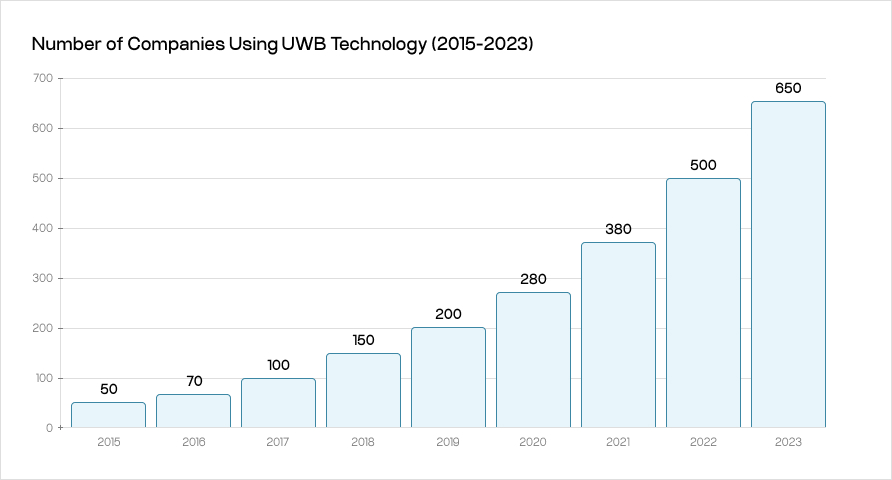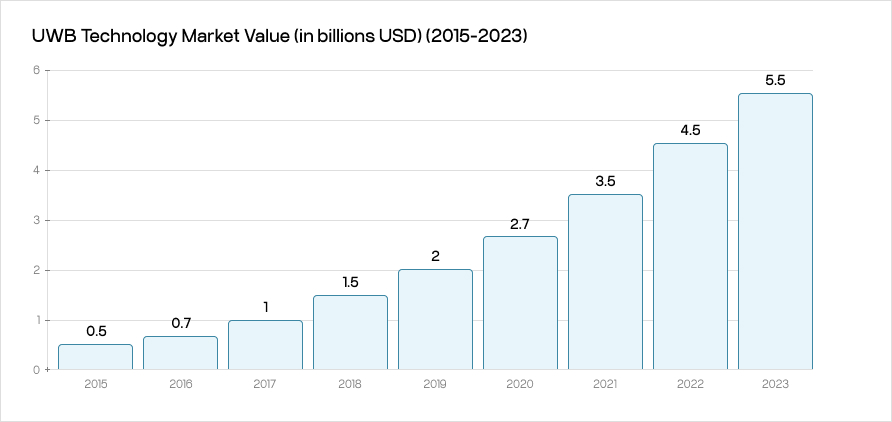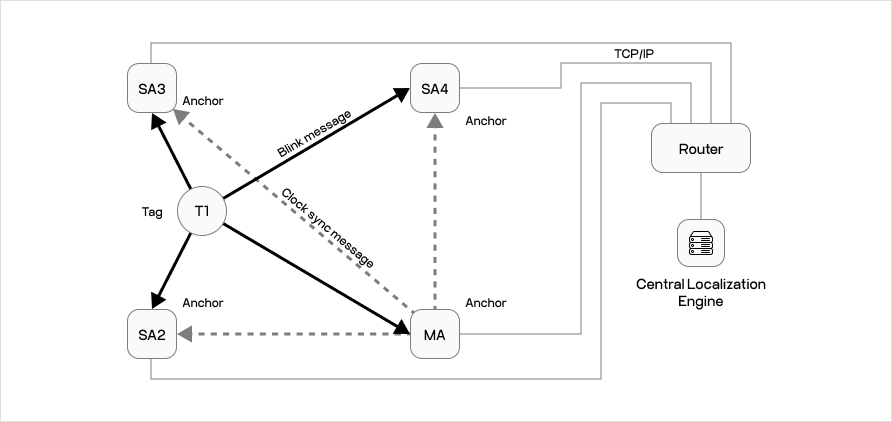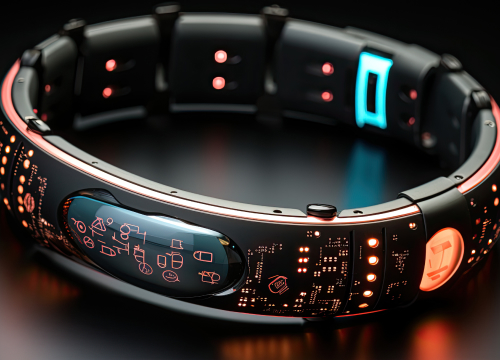
What is Ultra-Wideband (UWB)? Definition, How It Works & Prices

It’s rare for us to discuss wireless technology and discover something that alters the landscape. This one stands out, not just because of its impressive speed and accuracy, but also because of its transformative impact across various industries, from retail and entertainment, to healthcare and aerospace. Though many people have heard of it, not everyone knows its significance or potential. The ultra-wideband technology definition has never been more relevant with the rise of smart electronic devices and the never-ending quest for better connectivity. Here, we’ll attempt to explain how does UWB work and showcase its practical uses to make both enterprises and IT enthusiasts a step closer to benefiting from this invention.
What Is Ultra-Wideband Technology?
Ultra-Wideband (UWB) is a wireless technology with low power consumption that can transmit large amounts of data over short distances. We mention high accuracy for a reason: UWB measures the time needed for a signal to travel between the transmitter and receiver, enabling the possibility to calculate the distance in centimeters in real-time.
The Genesis and Trends
Originating in the late 1960s for radar applications, UWB utilized short-duration pulses for high-resolution imaging. As technology advanced, the potential of this technology grew, especially with the miniaturization of electronics. By the 2000s, it began influencing wireless communication, and a turning point happened in 2002 when the FCC approved UWB for commercial use, setting the stage for its broader integration.

By 2005, UWB hit the market, but its high cost limited its initial adoption. This landscape shifted in 2015 when Decawave introduced affordable UWB chips, catalyzing its widespread use. Tech giants like Apple and Samsung integrated UWB into smartphones, while automotive leaders like Tesla and BMW adopted it for enhanced security in keyless entry systems. IoT further propelled UWB’s significance, especially in smart homes and industrial asset tracking. By 2020, the UWB market was valued at over $2.7 billion.

The subsequent years, up to 2023, saw UWB’s prominence grow, especially with the pandemic emphasizing contactless solutions. Its precision became important in wearables, logistics, and security. Collaborations, such as Apple’s partnership with TagFi, highlighted its importance. What does UWB mean for today’s market? By 2022, its value reached approximately $4.5 billion globally.
Where is UWB Technology Used?
The versatility of UWB has seen its adoption across a wide range of industries, each leveraging its unique capabilities to drive innovation and efficiency.
– Healthcare
Large medical facilities benefit from real-time tracking of equipment, patients, and staff. The Mayo Clinic, for instance, utilizes this technology to ensure vital tools are always at hand during emergencies.
– Industrial automation
This technology is essential for asset tracking, improving efficiency, and implementing safety measures in factories and warehouses. Furthermore, it’s noteworthy that warehouse management software development ranks as one of the most sought-after services among our clientele. Market giants like Bosch and Siemens have incorporated it into smart factories to monitor equipment, expedite production, and protect workers.
– Retail
The shopping experience is also transforming. Stores such as Macy’s, are using the integration of RFID with UWB technology to monitor in-store customer movements, guiding them to products and offering on-the-spot promotions. This is particularly relevant as numerous successful companies have emerged specializing in IoT solutions development for retail.
– Smart Homes
Beyond connecting devices, UWB enables more intelligent homes that respond to inhabitants’ movements. Imagine lights that adjust based on your location in the house or security systems that can pinpoint intrusions to the exact room. If you are in search of smart home systems development services, Sirin Software is eager to assist by crafting a bespoke solution tailored to your needs.
– Entertainment
Ultra-wideband technology is revolutionizing virtual reality (VR) and augmented reality (AR) experiences through its motion-tracking capabilities. Leading gaming giants like Sony, Microsoft, and Oculus are actively integrating UWB technology to craft more responsive gaming environments.
How Does Ultra-Wideband Work?
To fully appreciate this communication technology’s capabilities and potential applications, let’s try to understand its mechanics and the technical nuances that set it apart from other players in the wireless field.

Frequency Domain and Channel Control
UWB operates within a meticulously defined frequency spectrum, specifically between 3.1 GHz and 10.6 GHz. This expansive bandwidth is a deliberate design choice, allowing for orthogonal frequency division multiplexing (OFDM). OFDM divides the signal into multiple narrowband channels at different frequencies, minimizing cross-channel interference and maximizing data throughput. UWB systems utilize advanced algorithms that dynamically select the optimal channel based on environmental factors, such as interference and signal attenuation.
Pulse Modulation, Communication, and Transmission
Transient, high-amplitude pulses are used in UWB instead of the continuous waveforms prevalent in conventional wireless networks. These pulses, with a duration measured in nanoseconds, are modulated to encode data. Utilizing Time-Hopping Pulse Position Modulation (TH-PPM), different data values are represented by altering the position of each pulse sequentially.
Energy Efficiency and Interference Resilience
Pulse-based transmission reduces duty cycles, optimizing power consumption and extending device battery life. Concurrently, by dispersing signals across a broad frequency range, often below traditional RF systems’ noise floor, UWB achieves strong immunity to multipath interference and co-channel disturbances. This combination ensures both energy conservation and reliable communication in dense wireless environments.
Positioning Metrics and Access Techniques
UWB systems measure distances with great accuracy by combining the speed of electromagnetic waves with the pulse time they travel between transmitters and receivers. This relies mainly on Time of Arrival (ToA) and Time Difference of Arrival (TDoA) approaches, which provide location information down to the centimeter. Time-hopping (TH) and Direct-Sequence technologies are used in dense environments to maintain sustainable communication. TH uses specified time slots for data transmission to avoid collisions, whereas Direct-Sequence widens the data’s frequency spectrum and allows concurrent messages without disruption.
How to Implement a UWB System?
We understand that every instance is unique, and a one-size-fits-all approach doesn’t cut it. The approach and methodology may vary depending on the task. However, here we will describe the most important and key aspects.
Environmental Analysis
The environment in which UWB operates can significantly influence its performance. For instance, metallic building materials can attenuate UWB signals. To address this, we employ RF spectrum analyzers to measure signal strength and pinpoint areas of signal degradation.
We utilize AutoCAD’s 3D mapping software for challenges posed by physical obstructions to visualize signal paths and identify potential reflection points. Based on our findings, we might recommend the deployment of signal repeaters or even suggest establishing a UWB mesh network to ensure consistent signal strength across the area.
System Design and Calibration
The heart of any UWB system lies in its transmitters (tags) and receivers (anchors). Their positioning is the key. We determine the optimal placements for these components using site planning tools like Decawave’s RTLS Studio. Once installed, we rely on development boards like DWM1001 for precise calibration, adjusting system parameters to the specific environment to guarantee accurate time-of-flight measurements.
The importance of proper positioning cannot be overstated. Placing an anchor at a suboptimal location could lead to inaccurate distance measurements. At the same time, a tag’s characteristics, such as its power output and antenna design, can influence the system’s overall accuracy.
Integration with Existing Infrastructure
It takes a careful hand to integrate UWB technology with the current IT infrastructure. Middleware tools like AWS API Gateway and Mosquitto MQTT brokers enable smooth data transfer across systems. Also, connecting UWB data with SAP ERP systems is often useful, achieving real-time processing of location-based information.
Given the importance of security, tools like MS Defender for IoT and Wireshark are valuable for monitoring data packets. Additionally, we protect against unauthorized access by employing TLS/SSL protocols to secure data integrity throughout transmission.
Difference Between Ultra-Wideband and Other Technologies
In the wireless communication landscape, this invention appears as an uncommon player. To make it easier to identify its unique attributes, let’s continue the UWB explanation by comparing it to other, more common technologies.
UWB vs. Wi-Fi
Both UWB and Wi-Fi are renowned for their high-speed data transmission capabilities. However, their underlying mechanisms and applications differ significantly:
– Communication Modality
UWB employs pulse-based communication, transmitting short, sharp pulses. This approach contrasts with Wi-Fi’s continuous waveforms, which rely on modulating carrier waves.
– Precision and Interference
UWB’s wide bandwidth and pulse-based nature grant it superior precision and resistance to interference, especially in dense environments. Wi-Fi, while robust, can be more susceptible to interference, especially in the crowded 2.4 GHz band.
– Range and Application
Wi-Fi is designed for more extensive coverage, often covering entire buildings or homes. UWB, with its focus on precision, is typically more localized, making it ideal for applications like precise indoor positioning.
UWB vs. Bluetooth
Bluetooth, especially its BLE (Bluetooth Low Energy) iteration, is a staple in short-range device-to-device communication. Here’s how it contrasts with UWB:
– Adoption and Compatibility
Bluetooth is widely used, which means it may be found in various gadgets, from headphones to smartwatches. Being more recent, UWB cannot claim the same widespread use.
– Data Rates
UWB can achieve much higher data rates compared to Bluetooth. While UWB can reach up to 675 Mbps, Bluetooth 5.0 maxes out at 2 Mbps.
– Precision
UWB’s time-of-flight capabilities allow it to determine distances with centimeter-level accuracy. Even with its advanced proximity-based services, Bluetooth typically achieves precision in the meter range.
| UWB | Wi-Fi | Bluetooth | |
| Communication Modality | Pulse-based communication | Continuous waveforms | Device-to-device communication |
| Precision and Interference | Superior precision and resistance to interference | Robust but susceptible to interference | Meter range precision |
| Range and Application | Localized (indoor positioning) | Extensive coverage (buildings/homes) | Short-range communication |
| Adoption and Compatibility | More recent, not as widespread | Commonly used in various devices | Widely used in gadgets |
| Data Rates | Up to 675 Mbps | Varies depending on version | Up to 2 Mbps (Bluetooth 5.0) |
| Precision | Centimeter-level accuracy | Varies | Meter range precision |
How Much Does a UWB Solution Cost?
The backbone of any UWB system lies in its hardware, primarily consisting of tags and anchors. Tags attached to objects or individuals for tracking are relatively less expensive than anchors, which act as reference points or receivers in the system. As of 2023, commercial-grade tags typically range from $10 to $50, while anchors, depending on their advanced features and capabilities, can be priced between $50 to $200.
Let’s break down the cost for a simple UWB solution in a medium-sized retail store aiming to enhance customer experience through precise indoor positioning:
– Tags: Assuming the store wants to track 100 shopping carts, and opts for tags priced at $25 each.
– Anchors: For effective coverage in a medium-sized store, let’s estimate the need for 10 anchors, choosing a mid-range anchor priced at $125:
| Item | Price, $ | Quantity | Cost |
| Tags | 25 | 100 | $2,500 |
| Anchors | 125 | 10 | $1,250 |
| Total Hardware Cost | $3,750 | ||
For tasks like configuration, real-time monitoring, and data analysis, UWB systems frequently require specialized software that may require separate license fees. Additionally, costs associated with system implementation, such as site surveys and calibration, have to be included in the total cost of the solution. Plus, long-term financial commitments like post-deployment support, routine maintenance, and prospective system upgrades, should also be taken into account. Therefore, engaging a specialized company can save expenses both at the design stage and in the long run.
Choose Sirin Software: Your Trusted Partner in UWB Technology
With its extensive knowledge of UWB systems, Sirin Software has a track record of providing custom solutions that meet the needs of every particular client. Our partnership with the Western European business Lopos resulted in the development of a user-friendly Android app for quick device setting through BLE. In the meantime, we created a comprehensive smart parking solution for a US-based startup by integrating UWB-enabled sensors, the cloud, and user-centric apps. These projects, along with others in our portfolio, highlight our dedication to precision and innovation. Allow Sirin Software to guide you through the complexities of UWB, delivering unmatched outcomes at every step.
Conclusion
Being able to answer the questions “What does ultra-wideband mean?” and “How does ultra wideband work?” might be the key differentiators for innovative companies in the constantly changing world of wireless technology. Because this technology is a game-changer, not a temporary trend. The definition of ultra-wideband goes beyond simple technical jargon due to its unmatched object-tracking precision and potential to redefine range measurement approaches. It represents an opportunity to alter the accepted practice rather than just keep up with it. Working together with specialists guarantees that you’re not just adjusting to the future – you’re defining it.
FAQ
Is Ultra-wideband safe?
UWB operates at very low power levels, often even lower than Wi-Fi and Bluetooth. It's designed to be unobtrusive and safe for everyday use. Plus, it's been extensively tested and adheres to international safety standards.
What disadvantages of UWB should I be aware of?
While UWB offers many advantages, like any technology, it has its limitations. Its range is typically shorter than Wi-Fi, and its signal can be affected by certain materials or obstacles. However, its precision and speed often outweigh these minor drawbacks.
What is UWB technology used for?
UWB is a versatile tech. It's primarily known for its super-precise location tracking, making it great for indoor positioning, asset tracking, and even advanced keyless entry systems in cars. Yet, that's just scratching the surface; its applications and uses are growing every day.



